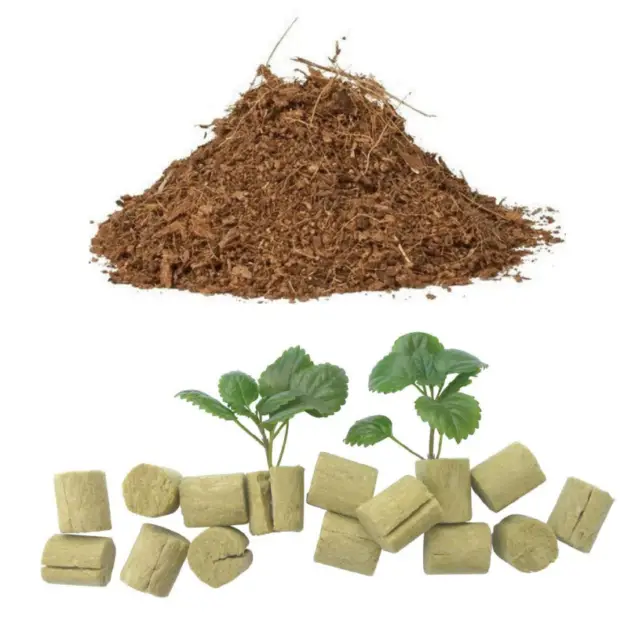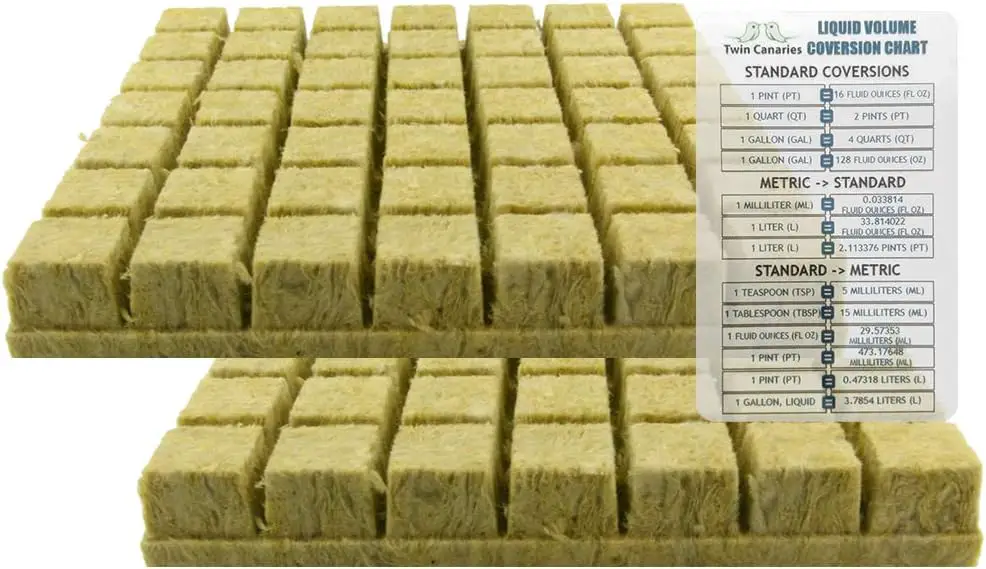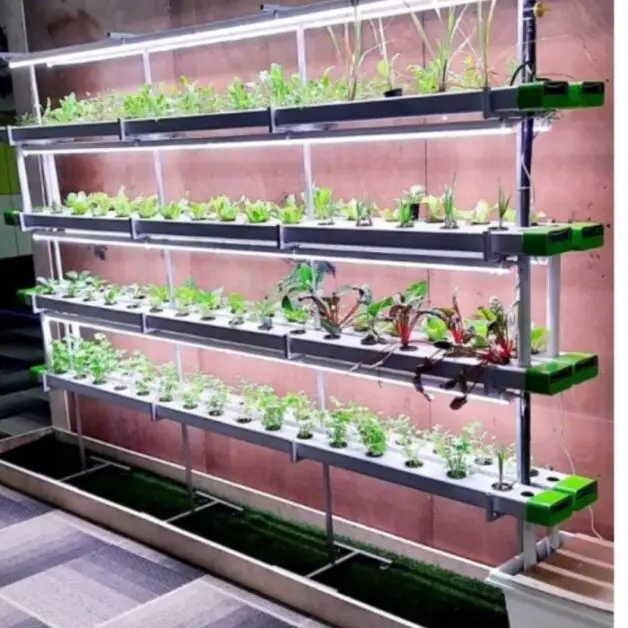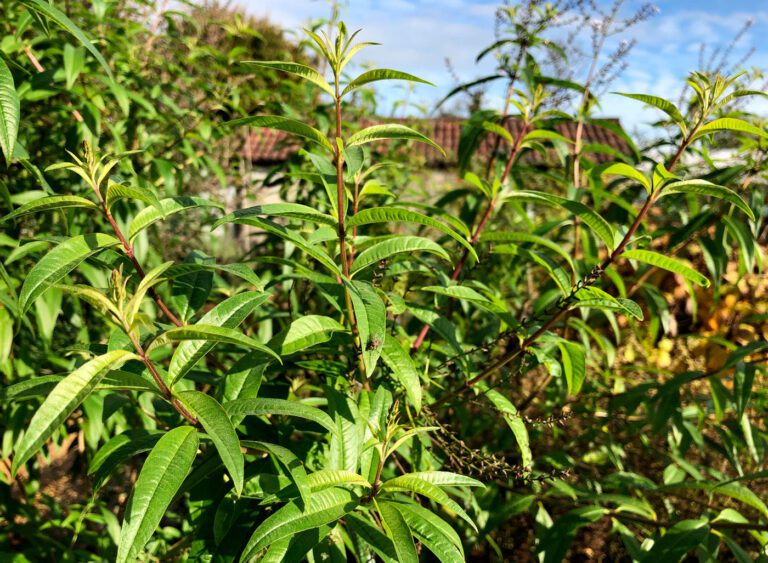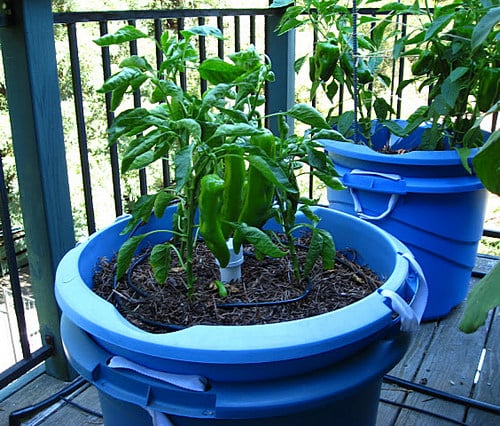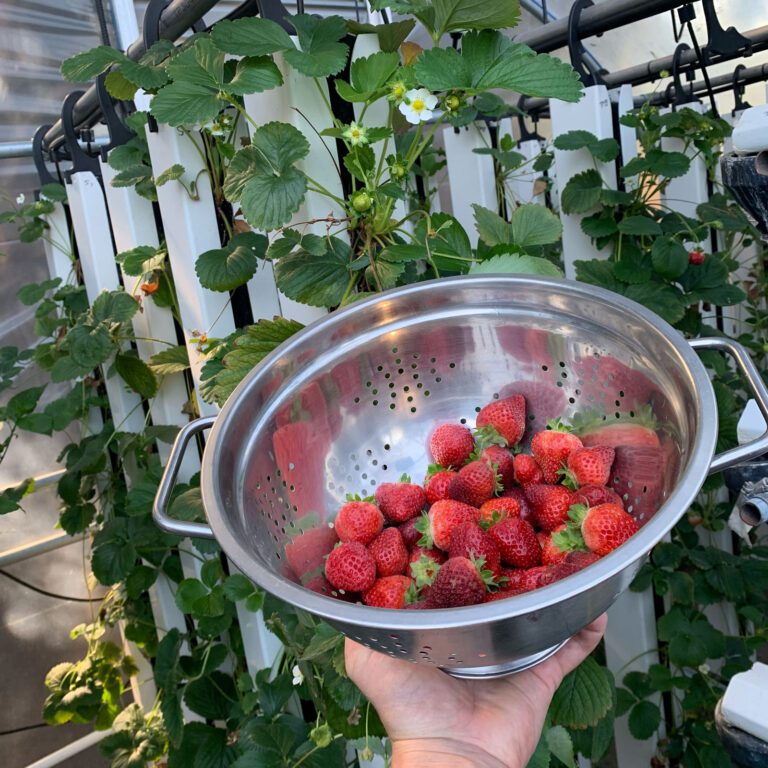Rockwool vs Coco Coir: How to Choose the Right One for Your Hydroponic Plants
Are you delving into the world of hydroponic gardening, but feeling stumped on which growing medium to choose? Don’t fret, fellow green thumbs! We’ve got you covered with the ultimate showdown: Rockwool vs Coco Coir. These two contenders are popular choices among hydroponic enthusiasts, each boasting unique benefits. But which one reigns supreme for your leafy companions? Picture this: you’re at the starting line of your hydroponic journey, armed with seeds and determination.
But before you take the plunge, let’s unravel the mystery behind these growing mediums. Join us as we dive into the world of Rockwool and Coco Coir, uncovering their secrets and discovering the perfect match for your hydroponic oasis. Ready, set, grow!
Table of Contents
Understanding Rockwool
Rockwool, also known as mineral wool, is a synthetic growing medium made from molten rock spun into fibers. It’s widely used in hydroponics due to its excellent water retention properties and pH stability. Rockwool comes in various forms, including cubes, slabs, and loose fibers, making it adaptable to different growing systems.
Advantages of Rockwool:
- Superior water retention: Rockwool retains water exceptionally well, ensuring consistent moisture levels for plant roots.
- pH stability: It has a neutral pH, providing a stable environment for nutrient uptake.
- Sterile and inert: Rockwool is free from pests, diseases, and weed seeds, minimizing the risk of contamination.
Disadvantages of Rockwool:
- Non-biodegradable: Rockwool doesn’t decompose and must be disposed of properly after use.
- Handling precautions: Fibrous particles can irritate the skin and respiratory system, requiring protective gear during handling.
Exploring Coco Coir
Coco coir, derived from coconut husks, is a natural and sustainable alternative to traditional growing mediums. It’s available in various forms, including blocks, chips, and fiber mats, offering versatility to hydroponic growers. Coco coir is prized for its excellent water retention, aeration, and biodegradability.

Advantages of Coco Coir:
- Excellent water retention: Coco coir retains moisture effectively while promoting optimal aeration for plant roots.
- Sustainable and renewable: It’s made from coconut husks, a byproduct of the coconut industry, making it an eco-friendly choice.
- Biodegradable: Coco coir decomposes naturally over time, reducing environmental impact.
Disadvantages of Coco Coir:
- pH variability: Coco coir may have a slightly acidic pH initially, requiring pre-treatment or pH adjustment before use.
- Potential for compaction: Over time, coco coir can compact, reducing its air porosity and drainage capabilities.
“After utilizing the Rockwool Starter Kit for my hydroponic plant growth, I found it to be a convenient and effective solution for starting seeds and promoting healthy root development. The kit’s versatile rockwool cubes provided a stable environment for my seedlings, ensuring consistent moisture retention and allowing for optimal aeration. While initially cautious of handling the rockwool due to its fibrous nature, I quickly adapted by wearing gloves and a mask, minimizing any discomfort. Overall, the kit proved to be a valuable addition to my hydroponic setup, offering a hassle-free way to kickstart my plant growth journey.”
After using Plantonix Coco Coir Organic Bricks for my gardening needs, I can confidently say they exceeded my expectations. These bricks provided a sustainable and effective growing medium for my plants, offering excellent moisture retention and pH neutrality. I appreciated the convenience of the bricks, which hydrated easily and provided optimal aeration for healthy root development. Overall, Plantonix Coco Coir Organic Bricks proved to be a valuable addition to my gardening arsenal, ensuring robust growth and thriving plants.
✅ Versatility: Rockwool is a versatile growing medium suitable for various hydroponic systems, including seed starting trays and hydroponic setups.
✅ Root Growth: Rockwool promotes healthy root development by providing a stable and aerated environment for plant roots to thrive.
✅ Moisture Retention: Rockwool retains moisture well, ensuring consistent hydration for plants during the germination and early growth stages.
✅ Sterile Medium: Rockwool is typically sterile, reducing the risk of pathogens or pests that may affect plant health.
✅ Reusable: Depending on the manufacturer’s instructions, rockwool cubes or slabs may be reusable for multiple growing cycles, providing long-term value.
❌ Handling Hazard: Rockwool fibers can irritate the skin and respiratory system, requiring proper precautions such as wearing gloves and a mask during handling.
❌ Environmental Impact: Rockwool production involves the use of non-renewable resources and may contribute to environmental concerns such as energy consumption and waste generation.
❌ Limited Nutrient Holding: While rockwool retains moisture well, it may have limited nutrient-holding capacity compared to other growing mediums, necessitating frequent nutrient solution application in hydroponic systems.
❌ Disposal Challenge: Disposing of used rockwool can be challenging, as it may not break down easily and could contribute to landfill waste if not recycled properly.
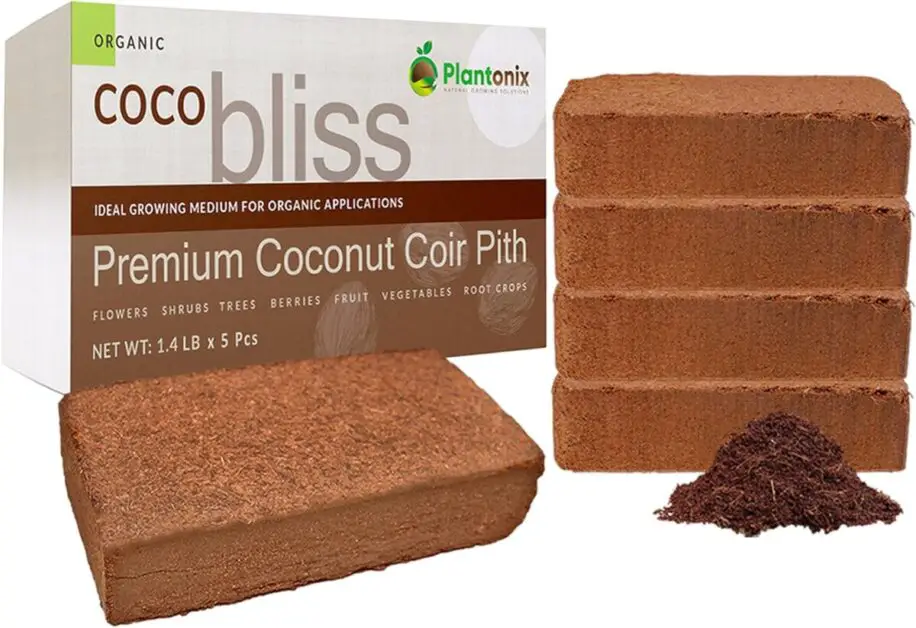
✅ Excellent Water Retention: Coco coir retains moisture well, providing a consistent water supply to plant roots and reducing the frequency of watering.
✅ pH Neutral: Coco coir typically has a neutral pH, which can be beneficial for a wide range of plants and allows for easy adjustment if needed.
✅ Good Aeration: It offers good aeration for plant roots, promoting healthy root growth and preventing waterlogging.
✅ Versatility: Coco coir can be used for various gardening applications, including seed starting, potting mix amendment, and hydroponic systems.
❌ Slow Decomposition: Coco coir decomposes slowly compared to other organic materials, meaning it may need to be replaced less frequently but can also lead to accumulation over time.
❌ Possible Contamination: Poor-quality coco coir may contain contaminants such as mold or fungus, which can affect plant health and require careful sourcing.
❌ Compactness: Coco coir bricks or blocks can be compacted, requiring time and effort to break apart and hydrate before use.
❌ Nutrient Availability: While coco coir itself is relatively inert, it may require additional nutrients or fertilizers to support plant growth, especially for long-term cultivation.
Exploring the Environmental Impact of Rockwool in Hydroponics
Hydroponic gardening has gained popularity for its ability to conserve water, maximize space, and produce high yields. However, while hydroponics offers numerous environmental benefits, the choice of growing medium can impact its overall sustainability. In this article, we’ll delve into the environmental impact of Rockwool, a commonly used growing medium in hydroponics, and explore its implications for eco-conscious growers.
Environmental Considerations:
- Non-biodegradability: One of the primary environmental concerns associated with Rockwool is its non-biodegradable nature. Unlike organic growing mediums such as Coco Coir or peat moss, Rockwool does not decompose over time. This means that once disposed of, Rockwool can persist in the environment indefinitely, contributing to waste accumulation.
- Energy-intensive production: The manufacturing process of Rockwool involves melting and spinning rock at high temperatures, which requires significant energy inputs. This energy-intensive production process contributes to carbon emissions and environmental footprint associated with Rockwool production.
- Disposal challenges: Proper disposal of Rockwool presents challenges due to its non-biodegradable nature. While some growers may attempt to recycle or repurpose used Rockwool, it often ends up in landfills, where it takes up valuable space and contributes to environmental pollution.
- Potential health risks: Handling Rockwool can pose health risks due to the release of airborne particles, particularly during cutting or manipulation. Fibrous particles from Rockwool can irritate the skin, eyes, and respiratory system, necessitating precautions such as wearing protective gear.
Mitigating the Environmental Impact:
While Rockwool poses environmental challenges, there are steps that growers can take to mitigate its impact:
- Recycling initiatives: Some manufacturers offer recycling programs for used Rockwool, where it can be collected, sterilized, and repackaged for reuse. Participating in these initiatives can help reduce waste and extend the lifespan of Rockwool.
- Exploring alternative mediums: Growers can explore alternative growing mediums with lower environmental impact, such as Coco Coir, perlite, or vermiculite. These organic options offer biodegradability, renewable sourcing, and reduced energy inputs compared to Rockwool.
- Optimizing resource efficiency: Implementing practices to optimize resource efficiency, such as water recycling, nutrient management, and energy-efficient lighting, can minimize the overall environmental footprint of hydroponic systems, regardless of the growing medium used.
Conclusion:
While Rockwool offers benefits such as excellent water retention and pH stability, its environmental impact warrants careful consideration among eco-conscious growers. By understanding the environmental implications of Rockwool and exploring alternative growing mediums and sustainable practices, hydroponic enthusiasts can minimize their environmental footprint and cultivate a more sustainable future for indoor agriculture.
Exploring the Environmental Impact of Coco Coir in Hydroponics
Coco coir, a widely popular growing medium in hydroponics, has gained attention for its potential environmental impact. As gardeners and cultivators strive for sustainable practices, it is crucial to assess the ecological footprint of using coco coir in hydroponic systems.
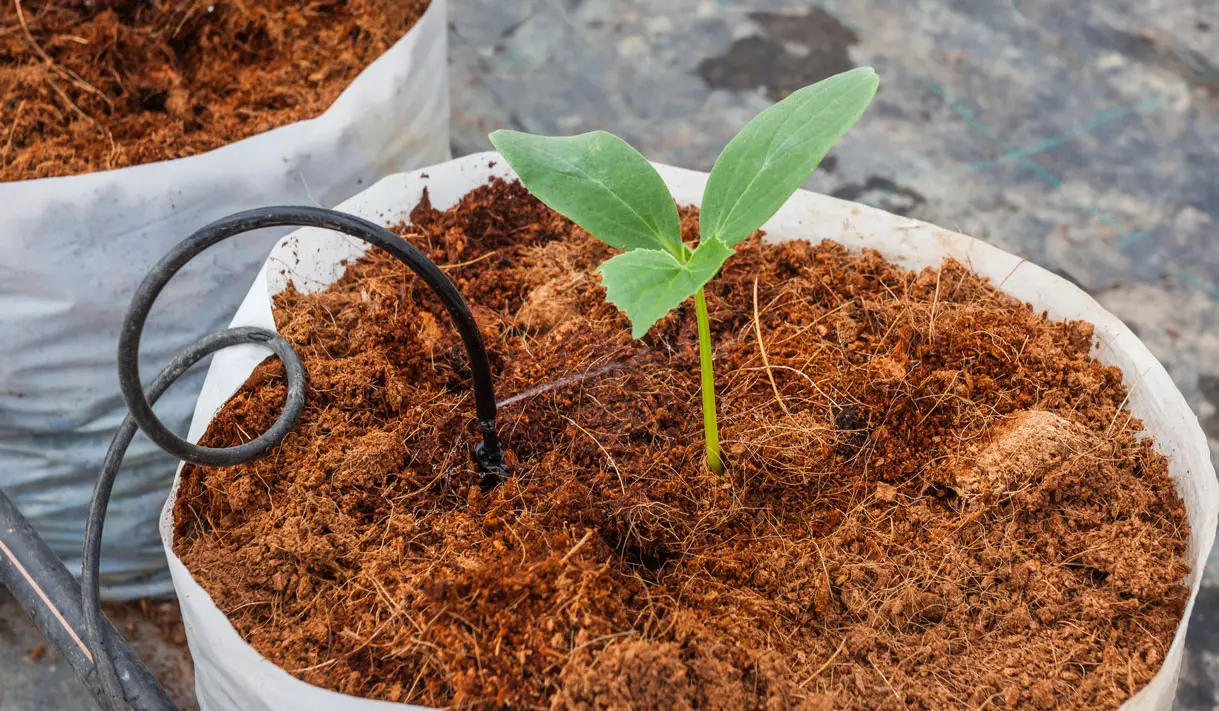
- Sourcing and Production:
- Coconut Husk Utilization: Coco coir is derived from the fibrous outer husk of coconuts. By repurposing this byproduct, we reduce waste and promote circular economy principles.
- Resource Efficiency: Coconut cultivation requires fewer resources (land, water, and energy) compared to other growing media like peat moss.
- Sustainable Harvesting Practices:
- Preserving Coconut Trees: Sustainable practices ensure that coconut trees are not overharvested, maintaining healthy populations.
- Protecting Natural Habitats: Responsible harvesting prevents deforestation and protects ecosystems where coconut trees thrive.
- Biodegradability:
- Natural Breakdown: Coco coir, being organic, naturally decomposes over time. This is advantageous for waste management.
- Composting: After use, coco coir can be composted, reducing landfill waste.
- Decomposition Rate: Factors like moisture levels and microbial activity influence how quickly coco coir breaks down.
- Considerations:
- Quality Control: Ensure coco coir quality (purity, absence of contaminants) for optimal plant growth.
- Balancing Sustainability: While coco coir is eco-friendly, monitoring its environmental impact is essential.
In summary, coco coir offers a sustainable alternative for hydroponic systems, but responsible sourcing, proper disposal, and awareness of its decomposition rate are crucial for maximizing its benefits. 🌿🥥🌱
Analyzing the Cost Effectiveness of Rockwool in Hydroponic Setups
Rockwool has long been a popular choice among hydroponic growers due to its cost effectiveness and versatility in hydroponic setups. This inert growing medium is made from spun volcanic rock or other materials, creating a dense and fibrous structure that holds moisture while allowing for adequate root aeration.

- One of the key benefits of using rockwool in hydroponics is its ability to retain water, ensuring that plants have access to a consistent supply of moisture.
- This is particularly important in hydroponic systems where water is recycled, as the rockwool can help prevent the roots from drying out.
- Additionally, rockwool is known for its excellent drainage properties, allowing excess water to drain away and preventing plants from becoming waterlogged.
- This helps to prevent the onset of root rot and other water-related issues that can be detrimental to plant health.
Assessing the Cost Effectiveness of Coco Coir in Hydroponic
Coco coir, a byproduct of coconut husks, has gained significant popularity in hydroponic systems due to its unique properties.

Highlight Coco Coir’s Durability and Water Retention
- Coco coir stands out for its durability and water retention capabilities.
- Unlike other growing media, it maintains its structure for extended periods, reducing the need for frequent replacement.
- Its ability to retain water efficiently ensures plants receive adequate hydration while minimizing water wastage.
Emphasize Cost Effectiveness
- Due to its durability, coco coir contributes to cost effectiveness in hydroponic gardening.
- Reduced need for replacement translates to savings in maintenance costs over time.
- Efficient water retention leads to optimized nutrient absorption, further enhancing its cost effectiveness.
Discuss Sustainability
- Coco coir offers a sustainable alternative for hydroponic gardening.
- Made from renewable coconut husks, it can be recycled and reused multiple times.
- Choosing coco coir minimizes environmental impact by reducing the need for new growing media and promoting eco-friendly practices.
Conclude with Benefits
- Assessing the cost effectiveness of coco coir reveals its numerous advantages.
- Its long-lasting structure and water retention abilities result in reduced maintenance costs and increased nutrient uptake efficiency.
- Moreover, its sustainability aligns with environmental conservation efforts, making it a favorable choice for eco-conscious growers.
Rockwool vs. Coco Coir: Choosing the Right Medium for Your Hydroponic Plants
| Aspect | Rockwool | Coco Coir |
|---|---|---|
| 1. Composition | – Manufactured Material: Spun from molten rock or basalt. | – Natural Fiber: Derived from coconut husks. |
| – Inorganic: Does not decompose. | – Organic: Biodegradable over time. | |
| 2. Water Retention | – Moderate: Holds water but provides good drainage. | – High: Retains water well, reducing frequency of watering. |
| – Consistent Moisture: Promotes stable moisture levels. | – Hydration: Requires proper aeration to prevent waterlogging. | |
| 3. Aeration | – Good Aeration: Provides air pockets for roots. | – Requires Aeration: Requires a well-structured mix for proper aeration. |
| – Uniform Density: Consistent throughout the medium. | – Variable Texture: Texture may vary based on processing. | |
| 4. pH Stability | – pH Neutral: Typically has a neutral pH. | – Slightly Acidic: May have a natural pH around 5.5-6.5. |
| – Stable pH: Resists fluctuations in pH. | – May Need Buffering: Requires monitoring and occasional buffering. | |
| 5. Nutrient Absorption | – High Cation Exchange: Retains and releases nutrients effectively. | – Cation Exchange: Moderate nutrient-holding capacity. |
| – Compatibility: Works well with various nutrient solutions. | – Compatibility: Compatible with hydroponic nutrient solutions. | |
| 6. Seedling and Cloning Support | – Excellent for Seedlings: Provides stability for young plants. | – Gentle for Seedlings: Suitable for delicate roots. |
| – Easy to Insert Cuttings: Facilitates cloning process. | – Effective for Cuttings: Supports root development. | |
| 7. Environmental Impact | – Manufacturing Impact: Requires energy-intensive production. | – Sustainable Source: Derived from coconut byproducts. |
| – Non-Biodegradable: Does not break down over time. | – Biodegradable: Decomposes naturally. | |
| 8. Disposal | – Landfill Impact: Contributes to landfill waste. | – Eco-Friendly Disposal: Biodegrades without environmental harm. |
| – Recycling Challenges: Limited recycling options. | – Compostable: Can be composted after use. |
Note: Consider the specific needs of your hydroponic plants, environmental preferences, and personal sustainability goals when choosing between Rockwool and Coco Coir as growing mediums. Regular monitoring and adjustments may be needed based on the chosen medium.
Watch video for more information:
FAQ
What is coco coir?
Coco coir is a natural fiber extracted from the husk of coconuts.
How is coco coir used in hydroponics?
Coco coir can be used as a growing medium in hydroponic systems, providing a stable and nutrient-rich environment for plant roots.
What are the environmental benefits of using coco coir in hydroponics?
Coco coir is a renewable and biodegradable material, making it a more sustainable option compared to other growing mediums. It also has a lower carbon footprint compared to alternatives like rockwool.
How does coco coir compare to rockwool in terms of cost effectiveness?
While rockwool may initially be cheaper, coco coir has a longer lifespan and can be reused multiple times, making it more cost-effective in the long run.
Can coco coir be used for all types of plants in hydroponics?
How often does coco coir need to be replaced in hydroponics?
Coco coir typically lasts for several crop cycles before needing replacement, depending on the specific system and plants being grown.
Is coco coir pH neutral?
No, coco coir has a slightly acidic pH level, usually around 5.5-6.5. Adjustments may be necessary to ensure the optimal pH range for specific plants.
Can coco coir be mixed with other growing mediums in hydroponics?
Yes, coco coir can be combined with other materials like perlite or vermiculite to create a customized growing medium that suits the needs of different plants.
How is coco coir prepared for use in hydroponic systems?
Coco coir needs to be properly hydrated and buffered before use to remove any excess salts and achieve the desired pH level. This process ensures optimal conditions for plant growth.
Are there any potential drawbacks or challenges in using coco coir in hydroponics?
Coco coir has high water retention capacity, which may require careful monitoring and adjustment of irrigation practices to prevent overwatering. Additionally, there may be variability in the quality of coco coir products available on the market.

Studied Agricultural Engineering-Plant Protection at University of California, Davis.
Head of Content writing team at Southelmontehydroponics.com

